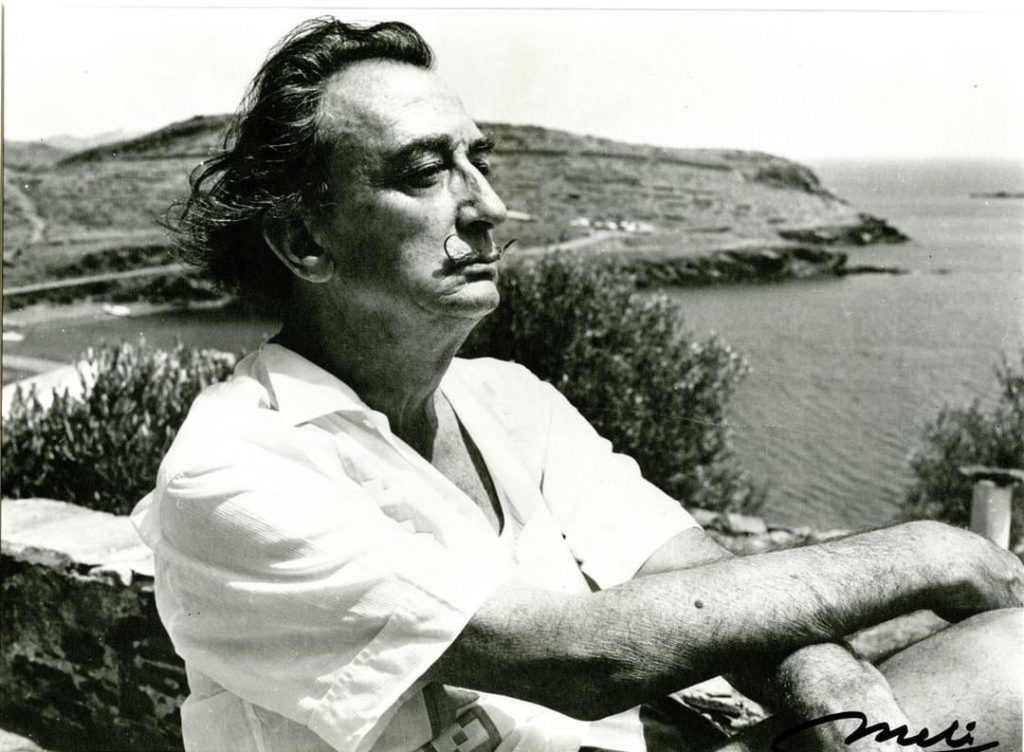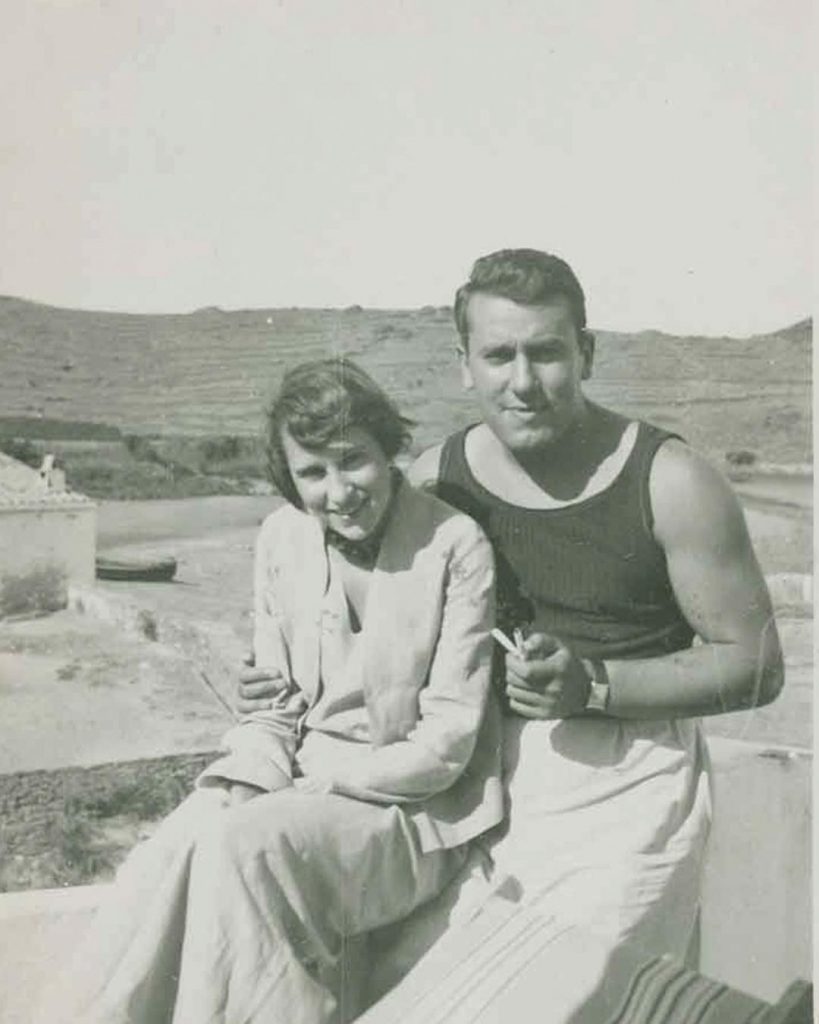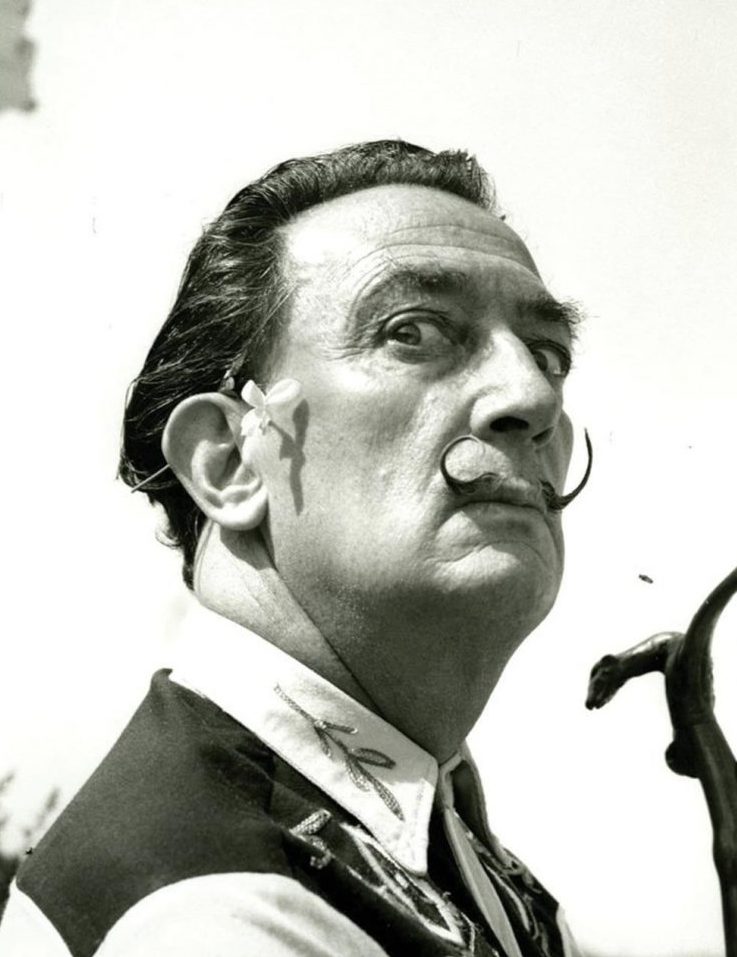| Full name | Salvador Domènec Felip Jacint Dalí i Domènech, Marqués de Dalí de Púbol |
| Occupation | painter |
| Age (date of birth) | 05.11.1904 |
| Date of death | 23/01/1989 (lived 84 years old) |
| Height/Weight | 172 cm |
| Link |
The name of Salvador Dali has become synonymous with surrealism, his talent bordered on madness. A crater on Mercury and a desert in Bolivia are named after the artist; the universe lives in his paintings, the secrets of which are yet to be unraveled.
Childhood
The biography of the genius began on the morning of May 11, 1904 in the Catalan town of Figueras in the family of Don Salvador Dali y Cusi, the forty-year-old owner of a notary’s office, and his wife, Dona Felipa. From infancy, El Salvador, named after his brother who died of an unknown infection, was under the affectionate and excessive care of his mother, aunt, grandmother and nanny Lucia. Salvador was a beautiful child, the women of the Dali family, to the displeasure of his father, spoiled him and indulged literally every whim. There is a known case when, having not received the promised sweets, Dali brutally scratched the chest and face of the nanny he adored. Lucia did not even think to complain about the behavior of the little tyrant, he got away with all the tricks. A little later, AnaMaria, the artist’s sister, who was born four years later, joined the army of admirers.
At the age of seven, Salvador was taken to the local municipal school, and every day spent there, the artist will remember with disgust. Classmates were suspicious of the appearance of a strange boy from a wealthy family who was scared to death of insects. The guys put grasshoppers in his desk, which drove Dali to fits of rage. The notary’s son never spoke to any of them except the teacher, and his classmates looked with envy and contempt at his small bamboo cane, adorned with the silver muzzle of a dog.
The artist’s father was an outstanding man for his time: the elder Dali denied the existence of God! Salvador immensely adored his father and sought to attract his attention. Shortly before he showed his creative abilities, an incident occurred that became a family legend and helped the boy win the favor of his father.
Having received a large amount for the transaction, the notary discovered that one of the bills was a skillful fake. To amuse himself, he asked his son if he could spot the fake. The boy went to the table and, having examined the banknotes, pointed to the counterfeit one. The whole family was amazed, and soon Salvador began to draw and at the age of 10 he was sent to the Academy at the monastery of the Order of the Marists, where he studied for four years.
The first landscapes of the genius have been preserved in private museums, but the young artist paid more attention to portraits. In the period 1920-1921 he painted his mother, aunt, sister and nanny. Their portraits literally shone with love and tenderness, in contrast to the portrait of their father, which evoked an oppressive, anxious feeling. A tall man with a pleasant appearance was depicted against a sky with bloody clouds, and cadaveric spots appeared on his large hands.
In search of myself
In 1921, a young Catalan entered the Academy of San Fernando, but he did not like his studies, and he openly ridiculed the teachers’ instructions, considering them unworthy. In Madrid, Dali met Bunuel, Rafael Alberti and Federico Garcia Lorca, and only communication with them kept him at the Academy, from which, however, he was soon expelled.
During these years, Dali enthusiastically studied philosophy, trying to understand the world order and survive the death of his mother.
In 1922, Mussolini came to power, and the artist became an adherent of socialist ideas, was a member of the Student Union, and participated in rallies and actions. A bright young man, already a famous genius, was attracted by politics, but art attracted more, and he made his choice.
Returning to Catalonia, the love for which he will carry through his whole life, Dali earned the fame of an eccentric with his manner of dressing, however, according to the recollections of contemporaries who knew him, Dali was a sensitive and cordial person, prone to a certain theatricality.
The paintings of 1923-1927 (“Basket with Bread”, “Purist Still Life”, “Female Figure at the Window”, etc.) were painted under the influence of Rembrandt and Caravaggio and amaze with their photorealism. All female images are his sister, whom he will paint until he meets Gala. Dali also idolized Velasquez and Vermeer, which resonated in his work, but by the end of 1928, surrealistic energies appeared in his canvases, reflecting not the real world, but the inner one. It is difficult to realize that “Honey is sweeter than blood”, where the artist depicted parts of a female body and a decomposing donkey carcass, refers to the same period.
Arriving with his aunt in Paris in 1928, Dali met Picasso, but there was no contact and they barely exchanged two or three phrases. At the end of the year, together with Buñuel, he created a painting that has become a monument of avant-garde, “Andalusian dog”. After some time, the artist returned to Paris, where he joined the group of artists created by Andre Breton.
Dali: Surrealism is me
In 1929, the first exhibition of the artist took place in Paris, his comrades in the circle of surrealists became wary of the Spanish dandy, who turned the very idea of surrealism, reflected in Breton’s manifesto. Preslovo


From the beginning of the 40s, religious motifs began to appear in Dali’s work, which he had not previously addressed, being raised by an atheist father. Gala is his Madonna, his inspiration, for the next 20 years Dali paints exceptionally large canvases with many small details that form a bizarre mosaic. “Ecumenical Council”, “Last Supper”, “Crucifixion”, “Madonna of Port Lligat”. Every day he gives his wife his paintings and constantly draws her.
In 1954, the sister of the genius, who was in the throes of jealousy and envy for Gala, published a collection of essays about artists, in which there was a place for Salvador. A caustic and caustic essay, in which AnaMaria claimed that surrealism spoiled her brother, making him a laughingstock, infuriated Dali, the result of which was the painting “A Virgin Indulging in Sodomy with the help of the horns of her chastity”.
Artist in the sunset
Since the 70s, the artist, who has become a national treasure of Catalonia, began the monumental construction of a palace in Figueras, which will house his works. He invariably enjoys the fame of a showman, almost every his appearance is a theatrical act, clearly rehearsed and thought out to the smallest detail. A cane, as a sign of aristocracy, and a mustache, which has become a symbol of everything unusual and elitist. Famously twisted upwards, they, according to the artist, were supposed to be ultra-cheerful as opposed to Nietzsche’s drooping and dull mustache. In one of the interviews, the artist called them antennas that capture inspiration.
In the late 60s, a photo spread around the world, which depicted the Mater walking an anteater on a leash of pure gold. Interesting facts from the life of the artist become almost anecdotes, such as, for example, the acquaintance of Dali and Khachaturian, whom the artist met by galloping naked through his living room to the sounds of the Saber Dance.
As he continues to write, Dalí collaborates with commercial enterprises and designs unique pieces of jewelry with mechanisms that bring them to life. At first, the artist’s ideas were embodied by his friend and famous jeweler Carlos Alemany, later he signed a contract with the House of Verdura. His famous Royal Heart, created for the Gala, in which rubies move, depicting the beating of the heart, is amazing. According to the sketches of the master, a lot of jewelry was created, which is not worth the price: butterflies flap their wings, grapes made of solid amethyst seem to exude a wine smell, lips partly open teeth made of natural pearls in a smile, ruby drops on crucifixes seem to be real blood.
Of the paintings of the “sunset” period of the artist, who already showed the initial signs of parkinsonism, the most famous paintings are “Warrior”, “In Search of the Fourth Dimension”, “Three Famous Mysteries of Gala”, “Pieta”.
Salvador’s personal life
The names of the artist and the Russian emigrant are forever connected with each other, despite the attempts of some researchers to refute their love, giving the press portioned sensations in the form of notes that once Dali beat his wife and broke her three ribs, and she found solace in the arms of young lovers, an artist and the muse was bound by something more than love.
Elena Dyakonova was an emigrant from Russia, having married the poet Paul Eluard, the bright-eyed beauty quickly became the star of Parisian bohemia. In 1929 Gala, as Elena called herself, and her husband Paul Eluard were invited to Cadaques. In preparation for the meeting, the artist tore off his shirt and rubbed himself with a mixture of fish glue, lavender oil and bird droppings, inserting a pelargonium flower behind his ear. However, when he saw Elena approaching his house, he changed clothes and appeared before her in a normal form.


An interesting fact, but Dali claimed that he had been waiting all his life for “his Russian girl”, who, by the way, was 10 years older than him all his life. According to some sources, in childhood, the artist was presented with a pen, in which there was a figure of a girl in a white fur coat, turning in snow flakes, according to others, he saw this picture, sunk into his soul, in the album of his school teacher.
I love her more than my father and mother, more than Picasso and more than money, the artist will repeatedly repeat. The father, to whom the enamored Salvador introduced the bride, renounced him and disinherited him. On the same day, Dali shaved his head, buried his hair on the beach, and never tried to mend his relationship with his father again.
The romance between the artist and the Russian emigrant lasted more than 50 years and ended with the death of Gala.
Some sources indicate that Dali was not present at the funeral. However, this is not the case, after the doctors at the clinic that Gala ended up in after a hip fracture informed the artist about her death, Dali secretly took out the body of her 88-year-old lover, wrapping him in a shawl and putting him in the front seat of his Cadillac. Gala wanted to be buried in Pubol Castle, but the burial ceremony required the permission of the authorities. The artist did not want publicity and the presence of strangers, his assistants managed to prepare everything while he was taking his beloved to Pubol.
Gala was buried in a coffin with a glass lid, Dali was not present at the burial, all this time he stood on the street and cried. He entered the crypt only after the ceremony and stood there silently for more than seven hours. Before leaving the crypt, the artist said: “You see, my love, I’m not crying.”
Death of a genius
The artist did not survive the departure of his beloved, since 1982 he felt worse with each new day. Chronic fatigue and pain from the loss of a loved one made Dali a recluse, in recent days he rarely got out of bed, under the influence of painkillers that aggravated a progressive mental disorder.
The great artist died in his native Figueras on February 23, 1989 from heart failure. The last words of the genius was the phrase “I want to go home.”
Photo source: Dali Museum Instagram (Rights of Salvador Dali reserved. Fundacio Gala-Salvador Dali).


Left a comment